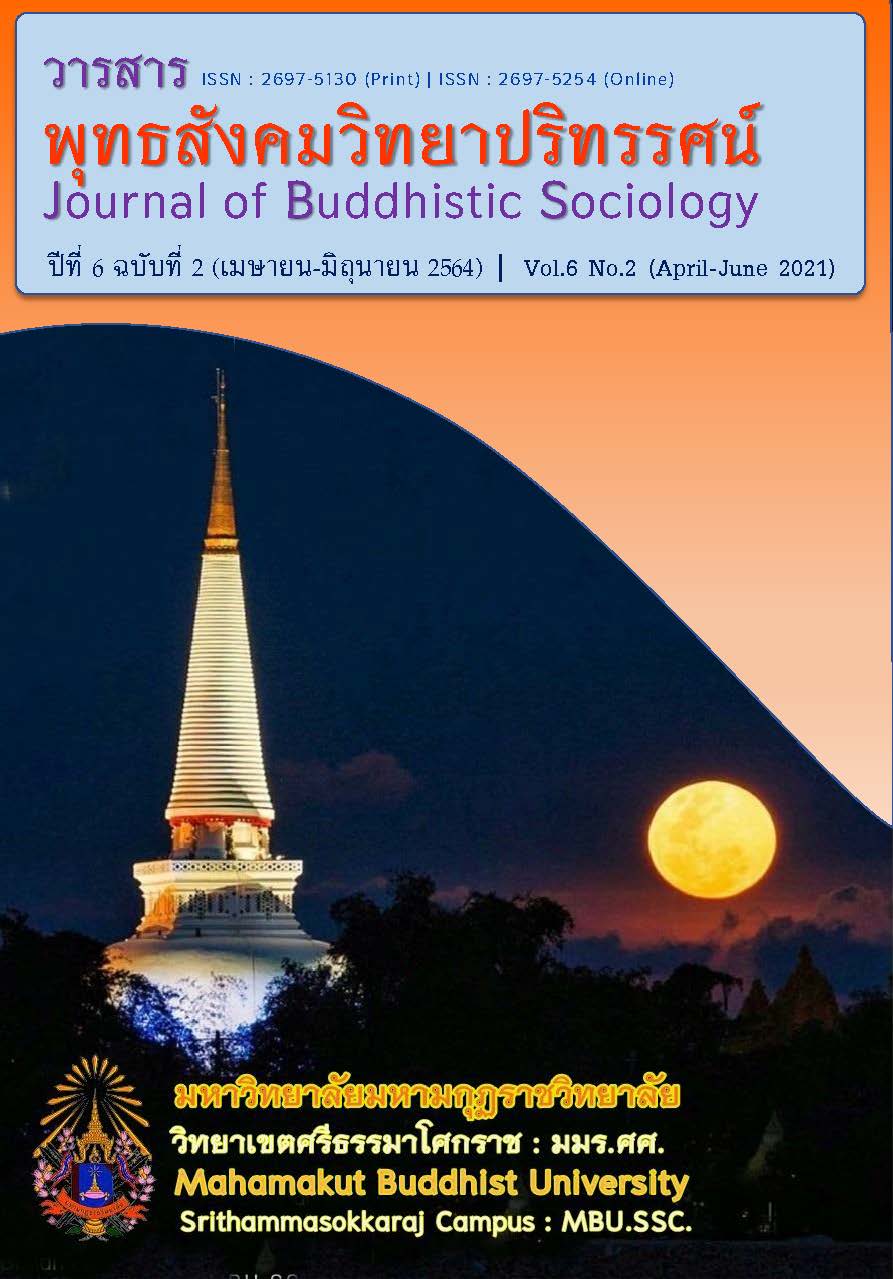NONVERBAL POLITICAL COMMUNICATION BY THE CONCEPT THAI YOUTH IN DEMOCRACY
Main Article Content
Abstract
For peaceful coexistence of the human society, good management of its own system is required. Also, there should be rules, regulations or ways of the regime that meet the needs of the people or citizens of that society based on equality. At the very least, the society must have rules that are fair enough for the people or citizens to have equal access to the resources of the society as much as possible.
When politics is a matter of power and interests, governments who have the power to run a nation often have policies for their voice-based groups of the elite and middle class. This causes social inequality in almost every dimension such as in education, justice system, especially the economic inequality in Thailand which has soared to become the number 1 in the world in 2020. It is known as Ruay Krajook - Jon Krajai in Thai (Extreme inequality – most people are living in extreme poverty while huge rewards go to those at the very top). The inequality in social dimensions has led to protests of the political symbolism of youth, students and the general public. People who have been affected by the distorted covenant system of the society have shown a three-fingered expression to communicate the public and society on the rights, freedoms, brotherhood and social equality of the people. The white bow tie of students presents the political demands for the mentioned issue as well.
All expressions for behavioral aspects, bodily and verbal action based on truthful mental action as the norm of humankind have a purpose or intention to let others know and understand what they want or demand. Without the expressions mentioned above, no one will know their needs or troubles or their objections will not be resolved or not be responded to. Therefore, the present-day political symbolism of the youth, students and the general public is a constitutional expression in democracy calling on the government to resolve the problems of the society they are facing.
Article Details
References
กอบกาญจน์ วงศ์วิสิทธิ์. (2551). ทักษะภาษาเพื่อการสื่อสาร. กรุงเทพมหานคร: โอเดียนสโตร์.
กาญจนา แก้วเทพ. (2552). การวิเคราะห์สื่อแนวคิดและเทคนิค. กรุงเทพมหานคร: พิมพ์ลักษณ์.
คณาจารย์คณะครุศาสตร์ จุฬาลงกรณ์ราชวิทยาลัย. (2539). ภาษาไทย 3. กรุงเทพมหานคร: โรงพิมพ์มหาจุฬาลงกรณ์ราชวิทยาลัย.
ณัฐพล ใจจริง. (2563). ขุนศึกศักดินาและพญาอินทรียร์. นนทบุรี: ฟ้าเดียวกัน.
ธีระยุทธ บุญมี. (2551). การปฏิวัติสัญศาสตร์ของโซซูร์ เส้นทางสู่โพสต์โมเดอร์นิสม์. กรุงเทพมหานคร: สำนักพิมพ์วิภาษา.
นันทนา นันทวโรภาส. (2558). สื่อสารการเมือง: ทฤษฎีและการประยุกต์ใช้. กรุงเทพมหานคร: สถาพรบุคส์.
พระจำเริญ ถาวรธมฺโม. (2561). การมีส่วนร่วมทางการเมืองของประชาชนในเขตเทศบาลเมืองบ้านพรุ อําเภอหาดใหญ่ จังหวัดสงขลา. วารสารพุทธสังคมวิทยาปริทรรศน์, 3(1), 48-64.
พัทยา สายหู และคณะ. (2542). ไทยศึกษา. นนทบุรี: มหาวิทยาลัยสุโขทัยธรรมาธิราช.
มติชนออนไลน์. (2563). เพราะโรงเรียนไม่ได้สอน เยาวชนกับการต่อสู้เชิงสัญญะ. เรียกใช้เมื่อ 4 มกราคม 2564 จาก https://www.matichon.co.th/columnists/news_2332188
วิกิพีเดีย. (ออนไลน์). การเลือกตั้งสมาชิกสภาผู้แทนราษฎรไทยเป็นการทั่วไป พ.ศ. 2562. เรียกใช้เมื่อ 6 มกราคม 2564 จาก https://bit.ly/3niksuO
______. (ออนไลน์). รัฐประหารในประเทศไทย พ.ศ. 2557. เรียกใช้เมื่อ 6 มกราคม 2564 จาก https://bit.ly/3okmkEC
วินิจ ผาเจริญ. (2563). การพัฒนาพลเมืองสู่โมเดลพลเมืองที่ตื่นตัวในสังคมประชาธิปไตยของไทย. วารสารพุทธสังคมวิทยาปริทรรศน์, 5(1), 54-65.
สวนิต ยมาภัย. (2536). เอกสารการสอนชุดวิชาภาษาเพื่อการสื่อสารหน่วยที่ 1-8 (พิมพ์ครั้งที่ 10). นนทบุรี: มหาวิทยาลัยสุโขทัยธรรมาธิราช.
สิริทิพพา วิวรรณศิริ. (2564). ทักษะการสื่อสารของมนุษย์. เรียกใช้เมื่อ 4 มกราคม 2564 จาก จากhttps://sites.google.com/site/11sirithippa/xwac-npha-sa
BBC NEWS ไทย. (2563). ย้อนเส้นทาง "เป็ดยาง" สัญลักษณ์การเคลื่อนไหวทางการเมือง ก่อนถึงกลุ่ม "ราษฎร". เรียกใช้เมื่อ 7 มกราคม 2564 จาก https://www.bbc.com/thai/thailand-54998537
David L. Altheide. (2008). “Media Logic and Political Communication” in Political com-munication. London: Sage Publications.
Dennis W. Johnson. (2001). No Place for Amateurs. London: Routledge.
Paul Felix L. et al. (1944). The people’s choice: how the voter makes up his mind in a presidential campaign. New York: Columbia University Press.


